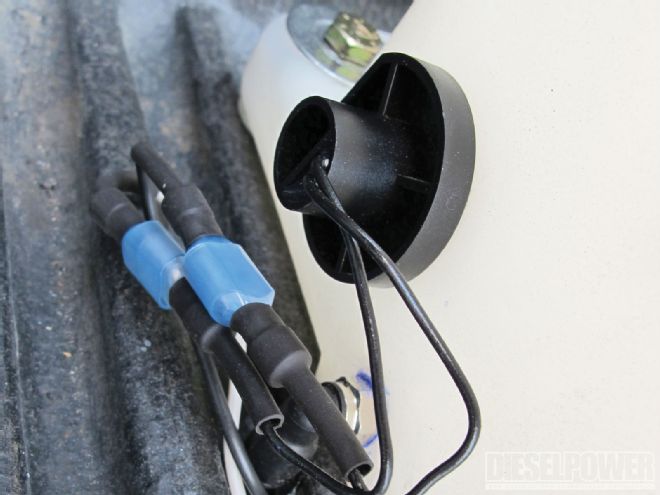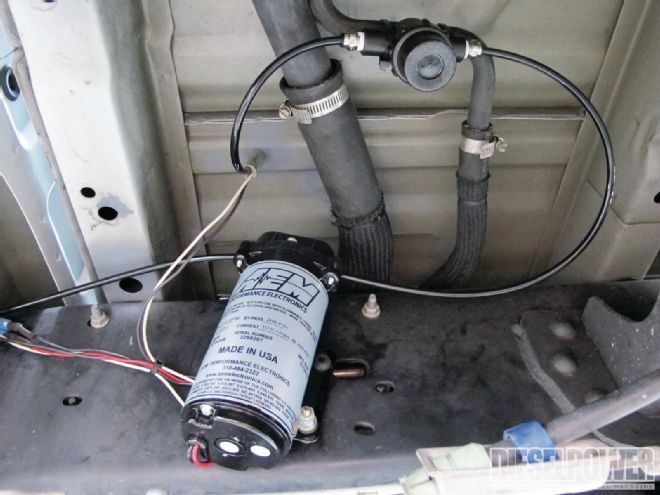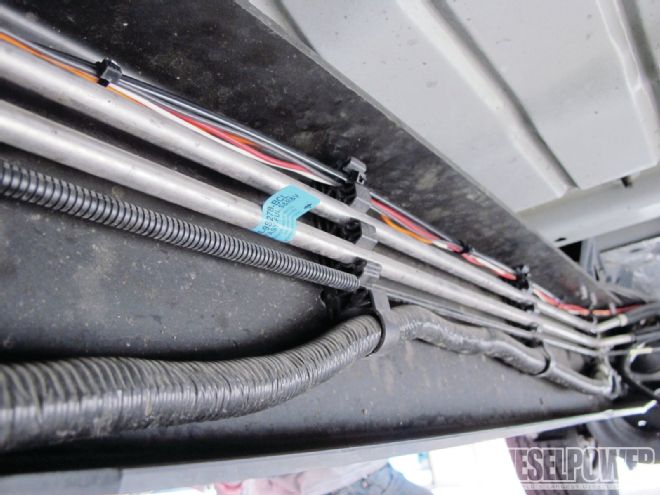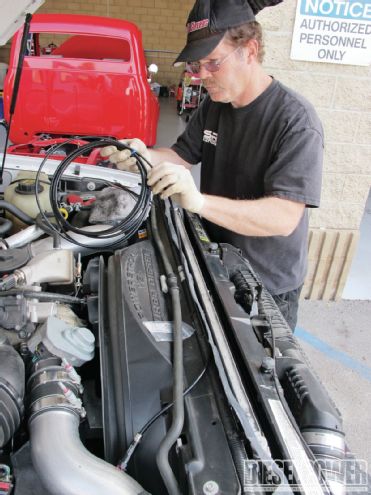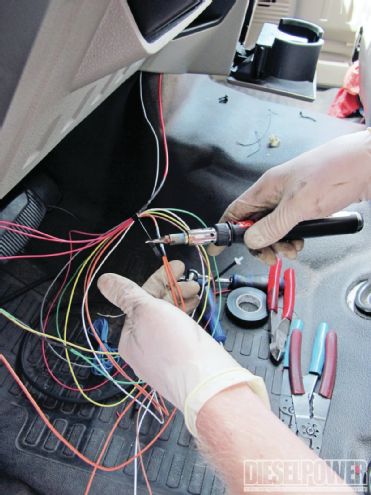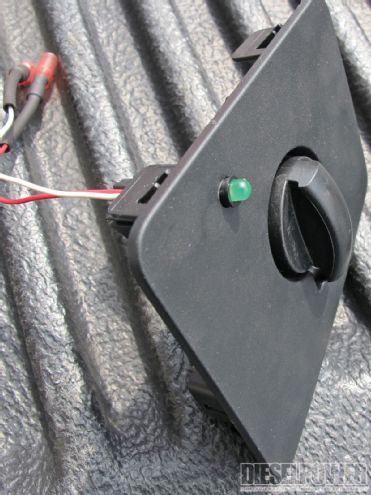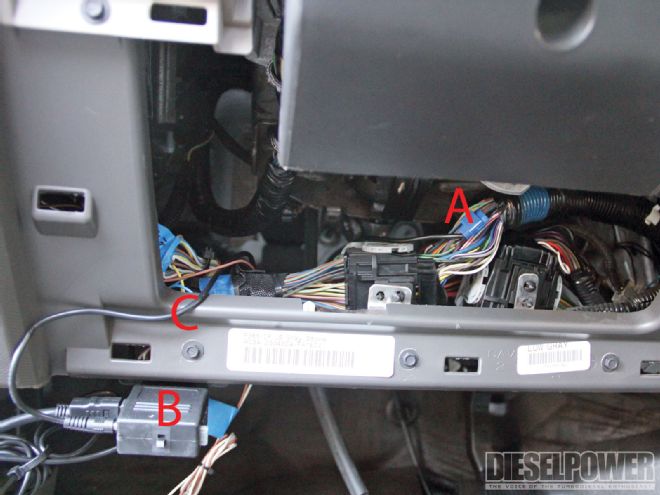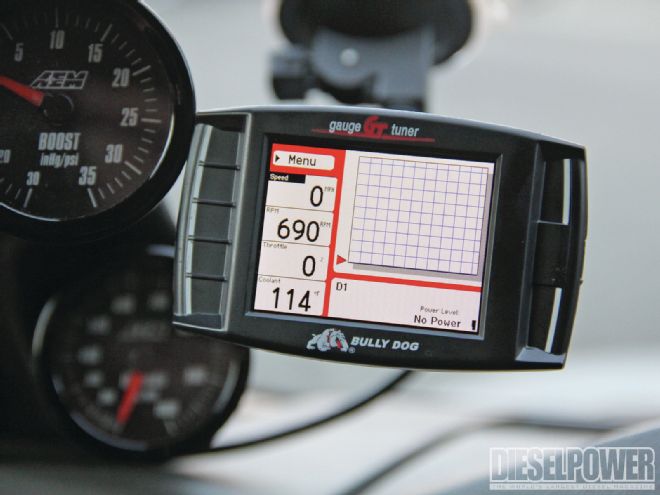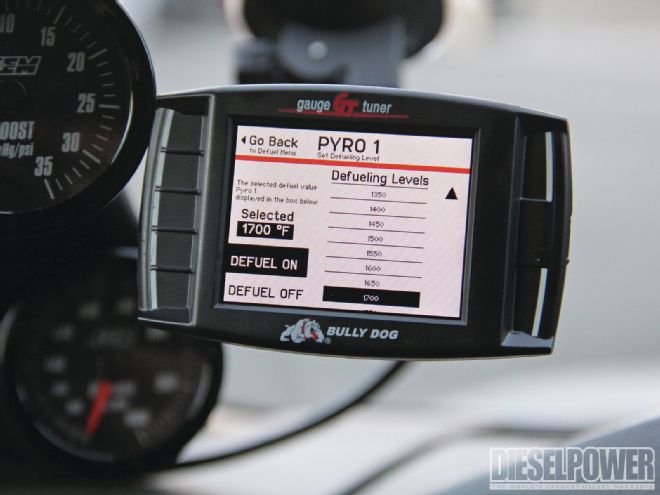The 6.4L-powered Super Dutys built between the ’08 and ’10 model years are now competing with the ’94-to-’98 Dodge for the title of easiest diesel to modify. Stock, they’re known to put down about 270 hp to the rear wheels (depending on the dyno), and with a tuner, intake, and DPF-delete they can make as much as 570 rwhp. The problem is, not everybody is comfortable with buying a $50,000 truck, promptly ripping off most of its emissions devices, and punishing its stock transmission with twice the torque it was designed for. We know this for a fact, because we get letters from readers stating just that—all the time.

| clean Sweep 2008 Ford F 350
So, for those who just want a bit more power and mileage, we’re bringing you this clean diesel build—a 6.4L Power Stroke—that retains all its emissions devices.
The Bully Dog Rapid Flow Intake
First on the list of our clean mods was a Rapid Flow intake from Bully Dog. The intake was designed to work with the stock intake tract, which means no annoying check engine codes or warning lights. Installation was very straightforward and only took about five minutes. The hardest part was probably wiggling the intake into the stock air silencer, which took some doing. A Torx bit is also supplied in order to remove the stock mass airflow (MAF) sensor.
The Bully Dog GT Tuner
Like the intake, the GT tuner was a very simple design and a very simple installation. We simply plugged the tuner and cable into the OBD-II port, sourced a key-on power wire from inside the dash, and we were ready to go. The download time was a little long, but after about 10 minutes, we were rockin’ and rollin’ with four different tunes at our fingertips.
AEM Water Injection Kit
The most labor-intensive part of our clean-diesel build was the installation of a 50-state-legal water-methanol injection kit, manufactured by AEM. We took our Super Duty to FSR Motorsports in Montclair, California, to have the water-injection system installed. Since it’s made for those who tow, a 5-gallon bed-mounted tank was installed, along with a single spray nozzle to inject water straight into the intake tract. While the system is compatible with methanol, we ran straight water for street use.

| The first step of installing the AEM water injection kit was to drill and tap the stock discharge tube. A single nozzle is used for emissions purposes.
Driving Impressions
Everybody wants to know how it drove, right? As it turns out, our testing was even more interesting than we thought it might be, because our truck went into regeneration mode as soon as we started the test. Since the GT Tuner has gauges, we were now able to see what the engine was doing, and boy did we learn some stuff. In the Ford’s diesel-particulate filter (DPF) regeneration mode, the exhaust gas temperature (EGT) at cruising speeds went from 700 degrees to 1,200 to 1,400 degrees in order to burn off all the soot in the DPF. At the same time, the boost dropped from 10 psi to zero, which leads us to believe the vanes on the turbo were opening fully in order to save the turbo. Acceleration was hampered in regeneration mode, as we ran a 0-to-60-mph time of 9.68 seconds, and the truck felt very laggy off the line.
After about 20 minutes of driving around in circles, the truck completed its DPF regeneration and responded with a 0-to-60-mph time of 9.11 seconds, a full half-second quicker. It was also much more responsive and left the line better. We knew we had a lot more left, and with the GT Tuner on Extreme, the truck rocketed to a 7.46-second 0-to-60-mph time, despite traction issues in First and Second gear. More testing revealed that even with the factory emissions hardware in place, the truck was making nearly 100 hp more than stock. It should be noted, however, that in its highest setting, the truck did produce some smoke (soot), which will lead to more frequent regeneration cycles. Unless you’re playing on the dyno or dragstrip, we’d probably leave the tuner in Tow mode most of the time.
With the AEM water kit turned on, we noticed one very interesting fact. Even with the programmer on Extreme, the smoke levels dropped, which leads us to believe that the water injection was dropping the particulate matter levels considerably. Although it will take more testing to prove, our theory is that the water injection will lead to fewer regeneration cycles and better fuel economy. Due to the 50-state nature of the kit, it does not have to be removed for emissions testing, and on older vehicles (especially non- intercooled ones) the AEM water injection can also lead to a dramatic EGT decrease.
All in all, we were very impressed with the ease of installation of the Bully Dog hardware, and we’re looking forward to the AEM water kit keeping our exhaust system clean for the foreseeable future. Best of all, there were no trouble codes or warning lights, and our truck still retained all its factory hardware and emissions devices, which is crucial for warranty work.
Performance Testing
Stock:
0-60 mph: 9.11 seconds
Quarter-Mile: 16.89 seconds at 79.5 mph
Horsepower: 289 hp at the rear wheels
Bully Dog Tuner:
0-60 mph: 7.46 seconds
Quarter-Mile: 15.43 seconds at 87.3 mph
Horsepower: 381 hp at the rear wheels
